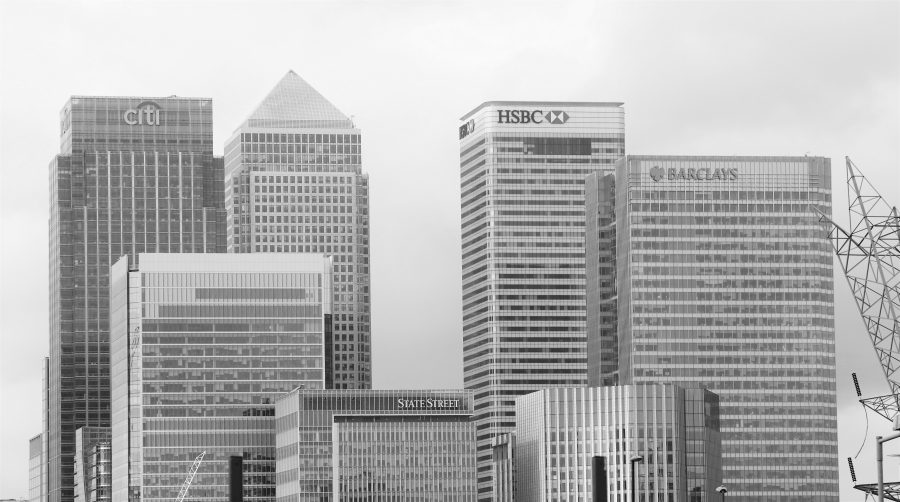For the last decade, central banks in developed countries have been pursuing policies designed to raise inflation. Quantitative easing, cheap funding for banks, tinkering with yield curves, low and negative interest rates – all aim to raise inflation to the ubiquitous 2 per cent target.
Understandably, central banks’ inflation forecasts assume that their policies will return inflation to target over the medium term. But as time goes by, and inflation stays stubbornly low, their forecasts are becoming increasingly difficult to believe. This does not bode well for central banks that depend above all on credibility.
The popular belief is that central banks control inflation by turning the money taps on and off. When they embarked on quantitative easing to ward off another depression, they turned on an enormous spigot, delivering massive quantities of money. All that money sloshing about the economy should have raised inflation. Indeed, in the early days of QE, many people predicted not only inflation but hyperinflation.
We now know there is no simple relationship between the quantity of money in circulation and inflation. Ten years of QE – or 20 years, in the case of the Bank of Japan – has not delivered high inflation. A few diehards still insist that all that money in circulation must eventually cause inflation, but most people now accept that QE does not have a significant effect. It does, however, raise asset prices – which some might regard as a form of inflation, and when it involves property prices, a particularly toxic one. Perhaps central banks should change their definition of inflation?
An alternative popular view – fostered, it must be said, by some central bank communications – is that there is a simple trade-off between unemployment and inflation. When unemployment is high, inflation is low; conversely, when unemployment is low, inflation rises. Unemployment in both the US and the UK has now fallen to levels not seen since the 1960s. Surely inflation must rise to 1960s levels?
But this simple trade-off doesn’t exist either. During the stagflation of the 1970s, both unemployment and inflation were high. Since then, central banks have used an “expectations-augmented” version of the Phillips curve, in which wage rises are driven by expectations of future inflation.
Central banks’ approach to inflation control is all about keeping labour cheap. If businesses have a large, low-price labour pool from which to draw, they have no incentive to give in to wage demands, and workers that fear replacement have no incentive to demand higher wages. As labour is the main cost for most businesses, they therefore have no reason to raise prices.
The expectations-augmented Phillips curve says that that if people believe that inflation will be low in future, they will moderate wage demands. Thus, the job of the central bank is not to set the current level of inflation, but to keep wages down by influencing people’s expectations of the future level of inflation.
What we might call “expectations theory,” or perhaps “mind tricks,” now dominates central bank decision-making. Central banks see their primary task as keeping inflation expectations “well-anchored”, by which they mean ensuring that people believe the central bank will meet its inflation target in the medium term.
For this, the credibility of central bank inflation forecasts is crucial. If the central bank’s inflation forecasts are persistently different from the out-turns, eventually people will stop believing its forecasts. When this happens, the central bank cannot control inflation.
And this seems to be exactly what is going on. Unemployment is low, but so is inflation. Clearly, people aren’t expecting wage rises large enough to raise inflation to target. There seems to be a growing belief that for a variety of reasons, low wages are here to stay.
You could say that central banks have been spectacularly successful at keeping wages down. Inflation is on the floor and there is little or no upwards wage pressure anywhere. The problem is that low inflation means low interest rates, and all sorts of vested interests really, really want higher interest rates. It is not inflation that central banks are failing to control, it is interest rates.
Central banks have advanced all sorts of explanations for the failure of the inflation demon to awaken. Post-crisis fiscal austerity, which is a considerable drag on both growth and inflation. Globalisation, which forces workers in developed countries to compete with workers in countries where the price of labour is lower. Technological advances that threaten to replace workers with machines. The trend towards longer working lives as the population ages: recent research by the Bank for International Settlements finds that a higher proportion of older people in the workforce puts downwards pressure on wages. The rise of the gig economy, self-employment, casual, temporary and zero-hour contracts, alongside weakening union power, falling union membership and systematic dismantling of collective bargaining.
These explanations all boil down to the same thing. Labour power is much weaker than it was in the 1970s, and is still weakening due to a combination of government policies and global economic forces. Wage rises and inflation are on the floor and are expected to stay there.
Belatedly, central banks are beginning to wake up to their weakness. They have little power to raise inflation when governments are hell-bent on feeding the economic forces that are keeping it down. And although they say they would like to see wages rising, they are simultaneously signalling that if wages rise, they will stamp on them. Why bother raising wages, only to take them away again in higher interest rates?
The Federal Reserve’s Daniel Tarullo has warned that central banks are relying too much on “inflation expectations”. He advises that central banks should wait until inflation starts to rise before raising interest rates. Belatedly, they are now beginning to follow his advice. But in the fight against








